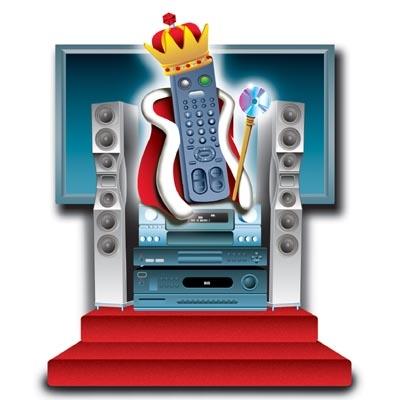The Custom Installer: The Little Things

Inventor, musician, scientist, politician, and philosopher, Ben Franklin was a brilliant man. His Poor Richard's Almanac is full of timeless proverbs, such as, "For want of a nail the shoe was lost. For want of a shoe the horse was lost. For want of a horse the rider was lost. For want of a rider the battle was lost. For want of a battle the kingdom was lost. For want of a nail a kingdom was lost."
This exemplifies the importance of the little things, and when I first heard it, I immediately thought of custom installation. The "nail" in most home theaters is the remote control, and without that seemingly small thing, your rule over that "kingdom" can most definitely be lost. Regardless of how terrific your system is, if you and your family can't easily operate it, then it's all for naught. Sadly, there are many people who assemble first-rate home theaters, often spending tens of thousands of dollars, who then balk at investing in a flexible, effective control system to let them use their gear the way they want. It's natural to take remotes for granted because we're inundated with them. Even the most basic home theater system with just a TV, DVD player, receiver, and speakers all but guarantees you'll ave three, and more complex systems will have five or six. One of my customers has 13 remotes!
But what was meant to simplify our lives has, for many people, only made them more complicated. For instance, think of how many basic commands are necessary just to watch a DVD. The TV needs to be turned on and set to the proper input. The surround receiver needs to be turned on, the right input selected, and the surround decoding engaged. Finally, the DVD player needs to be turned on and have its play button pressed. That's seven commands on three remotes - a sequence that can be too much for many people to remember. When I explain this basic procedure to new system owners, their eyes glaze over in that 1,000-yard stare.
Some people combat this confusion by creating a crib sheet. I actually know someone who created pages of step-by-step instructions, including digital photos of which buttons to push and the resulting display! For a system to be fully enjoyable, it must be bulletproof and stupid-simple to use - easy enough for a babysitter or visiting relative to operate with little or no instruction.
A lot of my customers have an aversion to being asked to buy yet another remote when they already have five or more sitting on their coffee tables. Others flash back to some so-called "universal" remote they bought that was anything but and fear they're about to be led down the same path.
Fortunately, manufacturers have introduced an abundance of terrific remotes recently. They fall into two types: those you can program yourself, and those you'll need professional help to program. With either kind, you can have a touchscreen with "soft" control buttons or one with tactile, "hard" buttons.
Touchscreen remotes usually offer more options, like being able to relabel buttons, but they can be harder to use than hard-button models. Two popular user-programmable remotes are the Philips Pronto TSU3000 ($399) and the Logitech Harmony SST-676 ($229). The Philips is the quintessential program-it-yourself touchscreen, while the Harmony offers programmable hard buttons smartly organized by activity (like "Watch TV"). If you bought your system from a custom installer and don't want to be bothered with programming the remote, the installer can do it for you at additional cost.
For more complex installations - or to make sure your system operates as simply as possible - you should probably have a professional program your control system. The Niles IntelliControl ($1,200 plus programming and accessories) is possibly the easiest remote to operate. I tell customers, "If you can read, you can work this." If you want a customized layout, want a system that can duplicate every button on your original remotes, or need two-way communication (via RS-232 or Ethernet), then a touchscreen remote from Crestron or AMX is probably the right choice. While these are definitely top-shelf remotes capable of controlling virtually anything, prices start around $3,000 and can exceed $10,000.
With proper programming you can operate your system with one push of a button. Instead of having to fumble around for different remotes, a Watch Movie command can turn on all the electronics, set them to the proper inputs, dim the lights, and start the DVD.
Budgeting for an adequate control system from the start will ensure that you're the master of your home theater instead of the other way around - and you'll never have to worry that your kingdom might be lost.
Back to Custom Installer Main Back to Homepage What's New on S&V













































